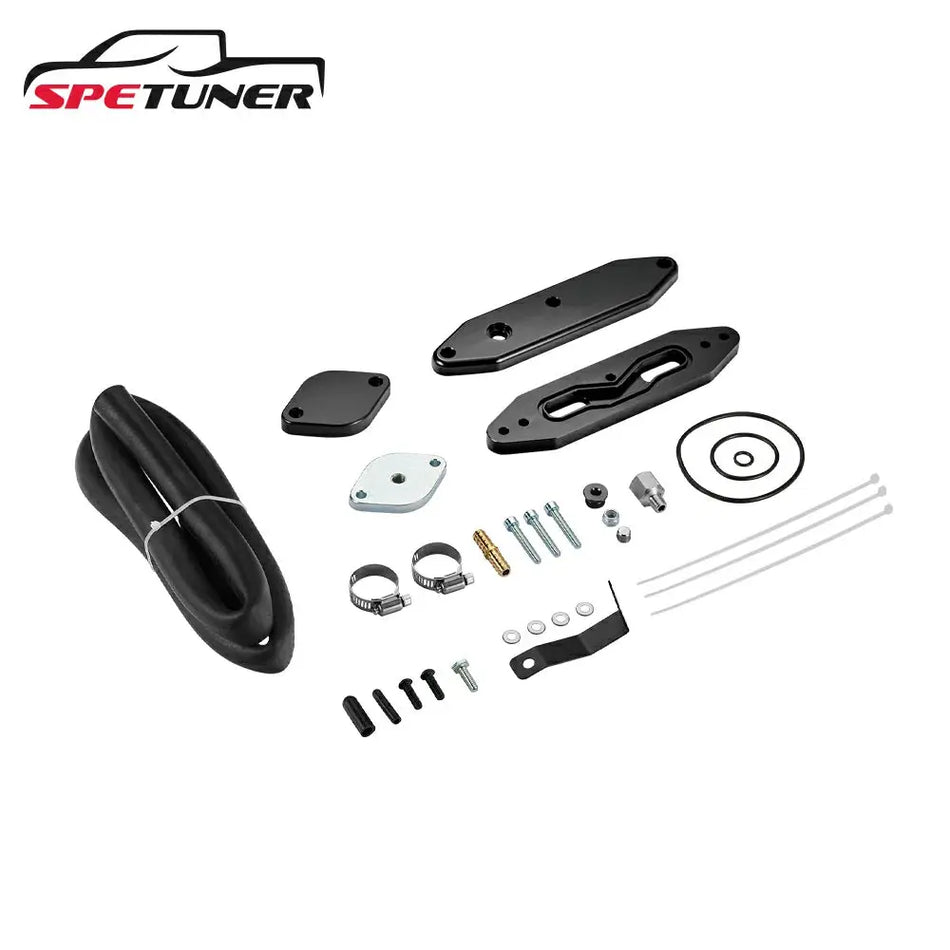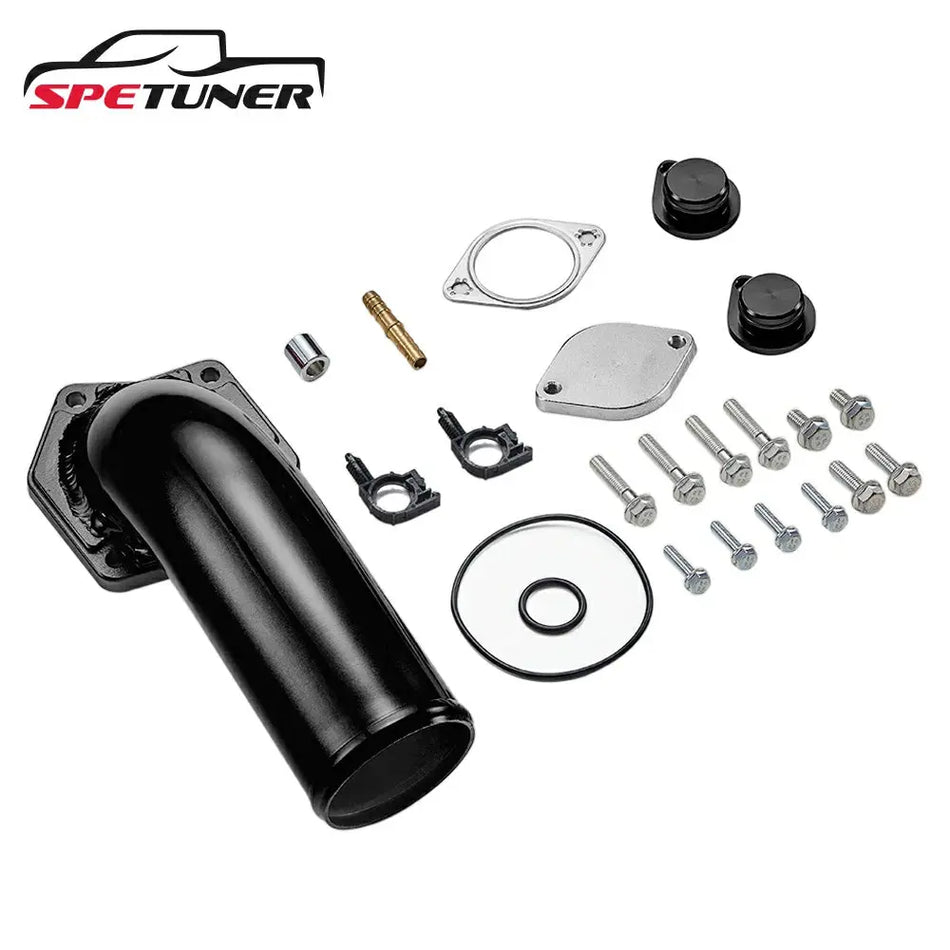What is the EGR Valve?
The Exhaust Gas Recirculation (EGR) valve is a crucial component in modern diesel engines. It helps reduce harmful nitrogen oxide (NOx) emissions by recirculating a portion of the engine’s exhaust gas back into the combustion chamber. It lowers combustion temperatures and reduces NOx pollution, which is harmful to the environment.
How Does the EGR Valve Work?
When the engine runs, some of the exhaust gases are routed back into the intake manifold via the EGR valve. This reduces the amount of oxygen entering the combustion chamber, thus lowering the temperature and preventing the formation of NOx emissions. The EGR valve works in conjunction with sensors and the vehicle’s computer to ensure it operates within optimal parameters.
The Role of the EGR Valve in Diesel Engines
In diesel engines, the EGR valve is essential not just for emissions control but also for maintaining fuel efficiency and engine performance. By lowering combustion temperatures, the EGR system helps meet regulatory emissions standards. However, over time, this can lead to a buildup of carbon in the system, potentially causing failures.

Common Symptoms of a Failing EGR Valve
A failing EGR valve can lead to several noticeable issues with your diesel engine. Recognizing these symptoms early can help prevent more severe damage and costly repairs. Here are the five most common signs of a malfunctioning EGR valve:
Rough Idle and Engine Stalling
One of the first and most noticeable symptoms of a bad EGR valve is a rough idle. If your engine shakes or vibrates when idling, especially when stopped at a red light, it could be a sign that the EGR valve is stuck open. When the valve is open, too much exhaust gas is recirculated back into the engine, causing an imbalance in the air-fuel mixture. This results in a rough idle, and in some cases, the engine may stall, particularly when coming to a stop. This symptom shouldn’t be ignored, as it can pose a safety risk on the road.
Loss of Power and Poor Acceleration
Another telltale sign of a faulty EGR valve is a loss of power, particularly when you’re accelerating or climbing hills. The engine may feel sluggish, almost as if it’s struggling to breathe. This is caused by the malfunctioning EGR valve disrupting the air-fuel mixture necessary for optimal combustion. Whether the valve is stuck open, letting too much exhaust back into the engine, or stuck closed, preventing adequate flow regulation, your engine’s power output will suffer. This becomes especially noticeable when merging onto highways or towing heavy loads.
Why Does the EGR Valve Fail?
EGR valves are designed to last, but several factors can lead to their failure. Understanding why these valves malfunction can help you prevent future issues. Here are the most common causes of EGR valve failure:
Carbon Buildup and Contamination
The most common cause of EGR valve failure is carbon buildup. Over time, exhaust gases, which carry soot and other contaminants, pass through the EGR valve. This leads to the buildup of carbon deposits on the valve, causing it to become stuck in either an open or closed position. As the carbon accumulates, it prevents the valve from functioning properly, which in turn affects the engine’s performance. If not addressed, this buildup can lead to further engine damage.
Faulty Electronic Components and Leaking Vacuum Lines
In addition to carbon buildup, electronic component failure or vacuum line leaks can also cause EGR valve problems. The EGR valve relies on sensors and electronic components to operate correctly and open and close as intended. If these parts fail, the valve may not function properly. Similarly, any vacuum leaks in the system can prevent the valve from receiving the correct pressure signals, resulting in improper functioning and poor engine performance.
Poor Maintenance and Low-Quality Fuel
Another contributor to EGR valve failure is poor vehicle maintenance and the use of low-quality fuel. Infrequent oil changes, inadequate cleaning, or poor-quality fuel can accelerate the buildup of carbon in the system, leading to premature valve failure. Regular maintenance, including oil changes and fuel system checks, can help mitigate this issue and extend the EGR valve's lifespan.

How to Diagnose a Failing EGR Valve?
Diagnosing a malfunctioning EGR valve is crucial for addressing issues promptly and preventing more severe engine damage. Here are some methods to help you identify whether your EGR valve is the problem:
Using OBD Scan Tool to Detect Error Codes
The simplest way to diagnose EGR valve issues is by using an OBD (On-Board Diagnostics) scan tool. This device connects to your vehicle’s computer system and can pull up error codes that indicate problems with the EGR valve. Common codes related to EGR failure include P0400 to P0499, which specifically refer to issues with the EGR flow, such as insufficient flow, excessive flow, or a complete system failure. If your check engine light is on, an OBD scan is a quick and easy way to identify the root cause.
Checking Engine Performance
In addition to using an OBD scanner, you can diagnose the EGR valve by observing your engine’s performance. If you’re experiencing rough idling, poor acceleration, or a noticeable loss of power, it may indicate a problem with the EGR valve. If your engine struggles to maintain a steady idle or stalls unexpectedly, the EGR valve could be stuck open, allowing too much exhaust gas into the combustion chamber.
Physically Inspecting the EGR Valve
If you're comfortable with basic vehicle maintenance, you can physically inspect the EGR valve itself. Look for signs of carbon buildup or physical damage. If the valve is stuck open or closed, or if the diaphragm is cracked, it will need to be cleaned or replaced. Keep in mind that this process can be time-consuming; therefore, it's essential to follow the correct steps for removal and inspection.
How to Solve EGR Valve Problems?
Once you’ve diagnosed the problem with your EGR valve, several solutions are available to fix it. Depending on the severity of the issue, you can choose between cleaning, replacing the valve, or installing an EGR Delete Kit.
Cleaning or Replacing the EGR Valve
If your EGR valve is clogged with carbon deposits, one solution is to clean the valve. Using a specialized EGR valve cleaner, you can remove carbon buildup and restore the valve’s function. However, if the valve is physically damaged or clogged beyond repair, you may need to replace it entirely. While cleaning can be a temporary fix, replacing the valve ensures long-term performance, especially if the valve has already accumulated significant carbon deposits.
EGR Delete Kit Solution
If you're looking for a more permanent solution, consider installing an EGR Delete Kit. The EGR Delete Kit completely removes the EGR system from your engine, eliminating any issues related to the valve. By removing the valve and associated components, you prevent the buildup of carbon and avoid future failures. Here’s why this might be the right solution for you:
What is an EGR Delete Kit?
An EGR Delete Kit is a performance upgrade designed to replace the EGR valve and its components. This kit includes the necessary parts to bypass the EGR system, including new piping and a block-off plate that seals the EGR ports. By eliminating the valve, your engine is no longer affected by the negative impacts of EGR flow.
Benefits of Installing an EGR Delete Kit
The benefits of installing an EGR Delete Kit are substantial:
Improved Engine Performance: Without the EGR system, your engine can perform more efficiently, with better throttle response, higher power output, and smoother acceleration.
Increased Fuel Efficiency: Removing the EGR system helps your engine run at optimal temperatures, improving fuel economy.
Longer Engine Life: By reducing carbon buildup and stress on engine components, the EGR Delete Kit can extend your engine's lifespan.
How to Install an EGR Delete Kit
Installing the EGR Delete Kit requires basic mechanical skills. You’ll need to remove the existing EGR valve and components, install the block-off plate, and connect the new piping. This process may vary depending on your vehicle's model, so please follow the specific instructions provided with the kit. If you're unsure about the installation, it's always a good idea to have a professional perform the upgrade.

EGR Delete Kit vs. Cleaning or Replacing the EGR Valve
When faced with a faulty EGR valve, you have a few options: clean the existing valve, replace it, or install an EGR Delete Kit. Let’s compare these options to help you make the best choice for your vehicle.
Performance Boost with EGR Delete Kit
The primary advantage of installing an EGR Delete Kit is the performance boost. By eliminating the EGR valve, your engine no longer suffers from the dilution of the air-fuel mixture caused by exhaust gases. This results in smoother acceleration, improved throttle response, and a more efficient combustion process. If you’re looking to improve your vehicle’s power and responsiveness, the EGR Delete Kit provides a clear advantage over simply cleaning or replacing the valve.
Cost-Effectiveness in the Long Run
While cleaning or replacing an EGR valve can be a lower upfront cost, it might not be the most cost-effective solution in the long run. Cleaning the valve may only provide a temporary fix, and replacing it can be expensive over time, especially if the problem persists. An EGR Delete Kit offers a one-time, permanent solution that eliminates the need for future repairs and maintenance related to the EGR system.
Impact on Emissions
One consideration when removing the EGR system is its effect on emissions. The EGR system is designed to reduce harmful nitrogen oxide (NOx) emissions, and deleting it may cause your vehicle to fail emissions testing, depending on local regulations. It’s essential to check the legal requirements in your area before deciding to install an EGR Delete Kit. However, for performance-focused drivers who do not need to pass emissions tests, the benefits of an EGR Delete Kit may outweigh the potential downsides.
How to Maintain Your EGR System for Longevity
To prevent future EGR valve failures and keep your engine running smoothly, regular maintenance is essential. Here are some key maintenance tips to help extend the life of your EGR system.
Regular Inspections and Cleaning
One of the most effective ways to prevent carbon buildup in the EGR valve is by performing regular inspections. Checking the valve every few months or during routine maintenance can help identify early signs of carbon accumulation. If you notice any signs of clogging or restricted flow, cleaning the valve early can prevent more serious issues down the road. Using an EGR valve cleaner and following proper cleaning procedures can help maintain the valve’s performance.
Use High-Quality Fuel
Using high-quality fuel is another essential step in maintaining your EGR system. Poor-quality fuel can lead to an increase in carbon buildup, as it may contain impurities that leave residue in the combustion chamber. By using top-tier diesel fuel, you can help reduce the amount of carbon in your system and minimize the chances of EGR valve failure.
Stick to Regular Oil Changes
Regular oil changes are crucial for maintaining a healthy EGR system. Engine oil serves as a lubricant and cooling agent, and old or contaminated oil can contribute to the formation of sludge and carbon buildup in the EGR valve. Follow your vehicle manufacturer’s recommendations for oil change intervals to ensure that the engine components, including the EGR valve, stay clean and function properly.
Conclusion
If your vehicle is experiencing symptoms of EGR valve failure, you have several options for addressing the issue. Whether you choose to clean or replace the valve or go for a more permanent solution with the EGR Delete Kit, it’s essential to act quickly to avoid further damage and expensive repairs. Installing the EGR Delete Kit can provide long-term benefits, including improved engine performance, enhanced fuel efficiency, and reduced maintenance costs. If you're ready to take control of your engine’s health, consider upgrading to an EGR Delete Kit today.
FAQs
Q1: What happens when the EGR valve goes bad?
A1: When the EGR valve goes bad, it can cause a variety of engine performance issues, including rough idling, engine stalling, loss of power, poor acceleration, and increased fuel consumption. If left untreated, it can lead to more serious engine problems.
Q2: What are the symptoms of a blocked EGR valve?
A2: Common symptoms of a blocked EGR valve include rough idle, engine stalling, poor acceleration, and increased fuel consumption. You may also notice a check engine light and difficulty passing emissions tests.
Q3: How do you tell if your EGR valve needs to be cleaned or replaced?
A3: If your EGR valve is clogged with carbon buildup, cleaning it might solve the problem temporarily. However, if the valve is stuck open or closed, or if cleaning doesn’t resolve the issues, it may need to be replaced entirely.
Q4: Can you drive with a faulty EGR valve?
A4: It’s not recommended to drive with a faulty EGR valve for long periods. A malfunctioning EGR valve can cause engine performance issues, such as rough idle and loss of power, and may lead to further damage if ignored.
Q5: Is replacing an EGR valve a big job?
A5: Replacing an EGR valve is a moderate job that requires mechanical knowledge. It typically involves removing the faulty valve, cleaning the area, and installing a new one. If you’re unsure, it’s best to have a professional mechanic handle it.
Q6: How much would it cost to replace an EGR valve?
A6: The cost to replace an EGR valve can range from $200 to $800, depending on the make and model of your vehicle, labor costs, and whether you opt for an OEM (Original Equipment Manufacturer) or aftermarket part.
Q7: What is the role of the EGR valve in a diesel engine?
A7: The EGR valve helps reduce nitrogen oxide (NOx) emissions by recirculating a portion of the exhaust gases back into the combustion chamber. This process lowers the combustion temperature and helps control harmful pollutants.
Q8: How can an EGR Delete Kit solve EGR valve problems?
A8: An EGR Delete Kit permanently removes the EGR system from your vehicle, eliminating carbon buildup, preventing valve failure, and improving engine performance. It’s a great solution for diesel engines that experience recurring EGR issues.
Q9: Will an EGR Delete Kit affect my vehicle’s emissions?
A9: Yes, an EGR Delete Kit will affect your vehicle’s emissions since it removes the EGR system, which reduces NOx emissions. Be sure to check your local emissions regulations before installing the kit, as it may cause you to fail emissions tests.
Q10: Can I clean my EGR valve myself, or should I replace it?
A10: If you have basic mechanical skills, you can clean your EGR valve using specialized cleaners. However, if the valve is severely clogged, damaged, or not functioning properly, replacing it is the better option for long-term performance.










